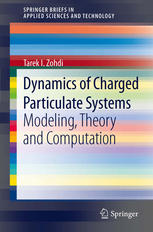

Most ebook files are in PDF format, so you can easily read them using various software such as Foxit Reader or directly on the Google Chrome browser.
Some ebook files are released by publishers in other formats such as .awz, .mobi, .epub, .fb2, etc. You may need to install specific software to read these formats on mobile/PC, such as Calibre.
Please read the tutorial at this link: https://ebookbell.com/faq
We offer FREE conversion to the popular formats you request; however, this may take some time. Therefore, right after payment, please email us, and we will try to provide the service as quickly as possible.
For some exceptional file formats or broken links (if any), please refrain from opening any disputes. Instead, email us first, and we will try to assist within a maximum of 6 hours.
EbookBell Team

5.0
110 reviewsThe objective of this monograph is to provide a concise introduction to the dynamics of systems comprised of charged small-scale particles. Flowing, small-scale, particles ("particulates'') are ubiquitous in industrial processes and in the natural sciences. Applications include electrostatic copiers, inkjet printers, powder coating machines, etc., and a variety of manufacturing processes. Due to their small-scale size, external electromagnetic fields can be utilized to manipulate and control charged particulates in industrial processes in order to achieve results that are not possible by purely mechanical means alone. A unique feature of small-scale particulate flows is that they exhibit a strong sensitivity to interparticle near-field forces, leading to nonstandard particulate dynamics, agglomeration and cluster formation, which can strongly affect manufactured product quality.
This monograph also provides an introduction to the mathematically-related topic of the dynamics of swarms of interacting objects, which has gained the attention of a number of scientific communities. In summary, the following topics are discussed in detail:
(1) Dynamics of an individual charged particle,
(2) Dynamics of rigid clusters of charged particles,
(3) Dynamics of flowing charged particles,
(4) Dynamics of charged particle impact with electrified surfaces and
(5) An introduction to the mechanistic modeling of swarms.
The text can be viewed as a research monograph suitable for use in an upper division undergraduate or first year graduate course geared towards students in the applied sciences, mechanics and mathematics that have an interest in the analysis of particulate materials.